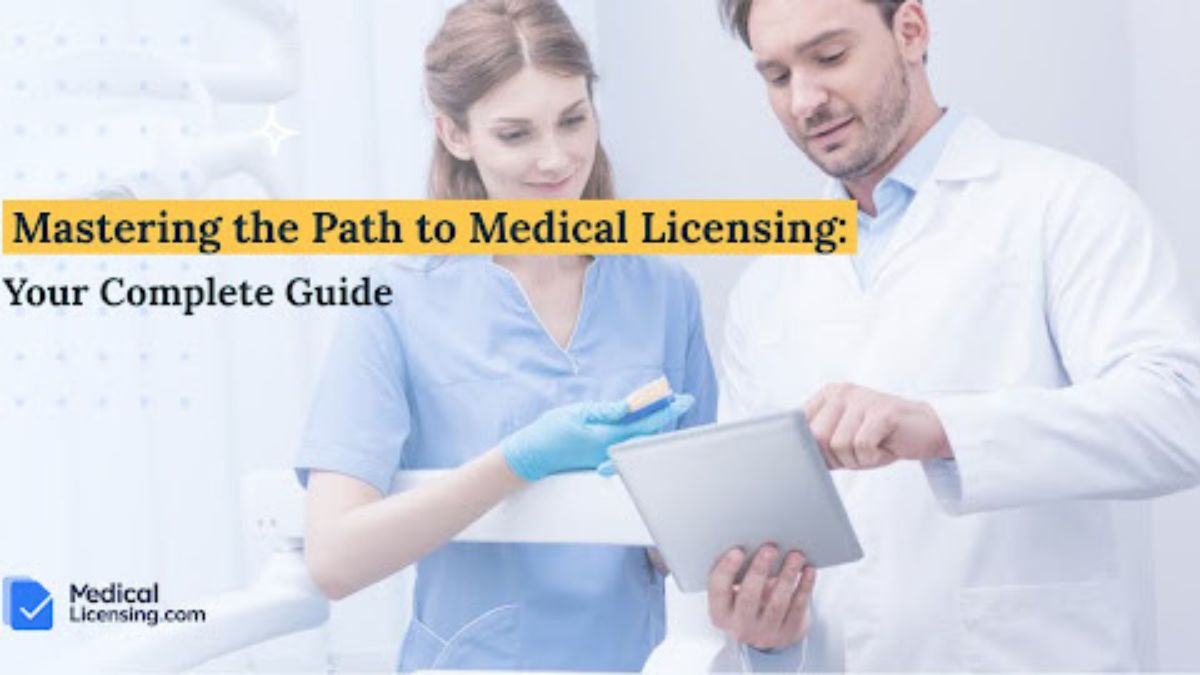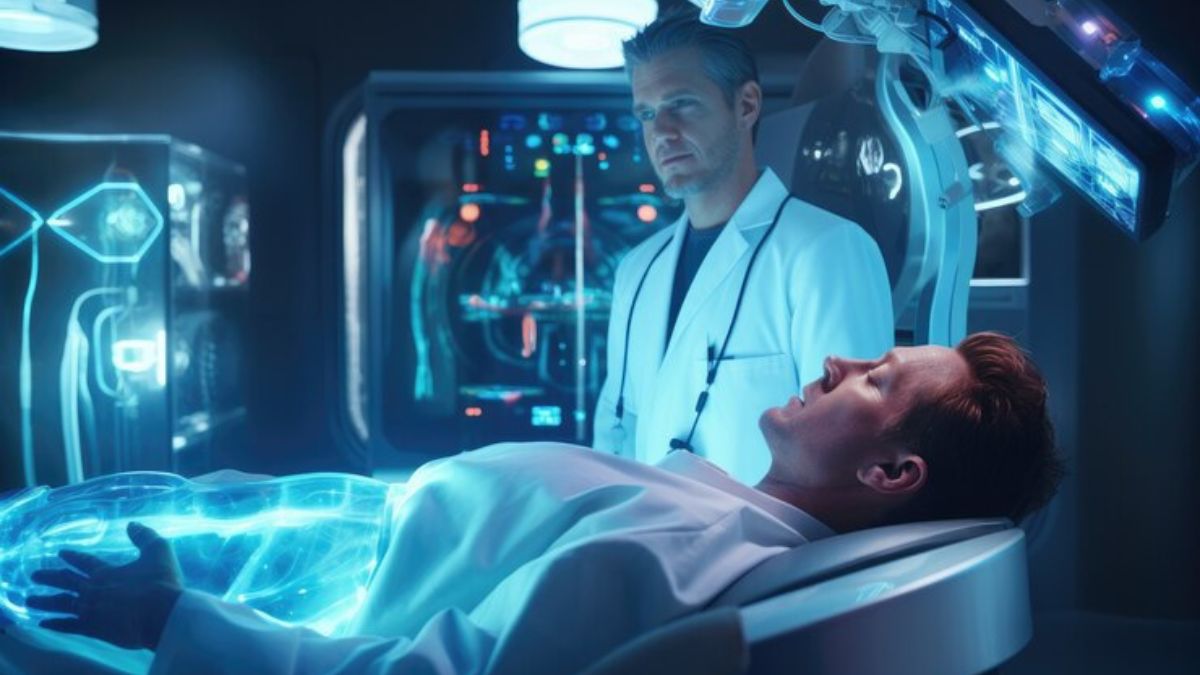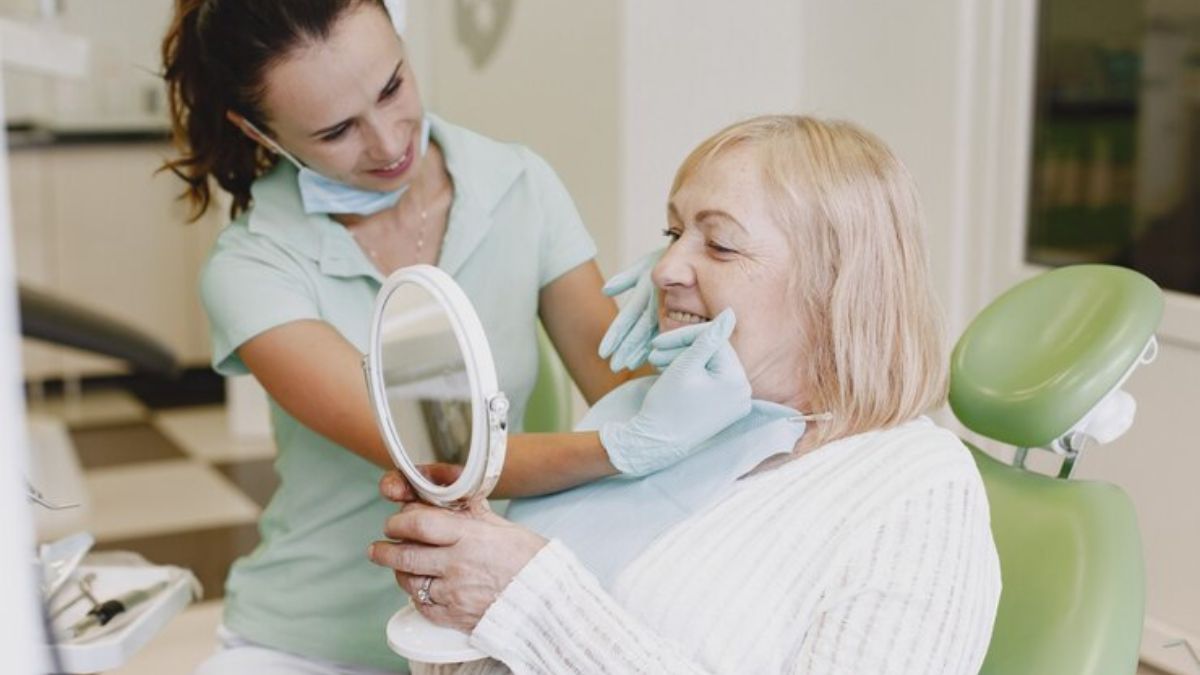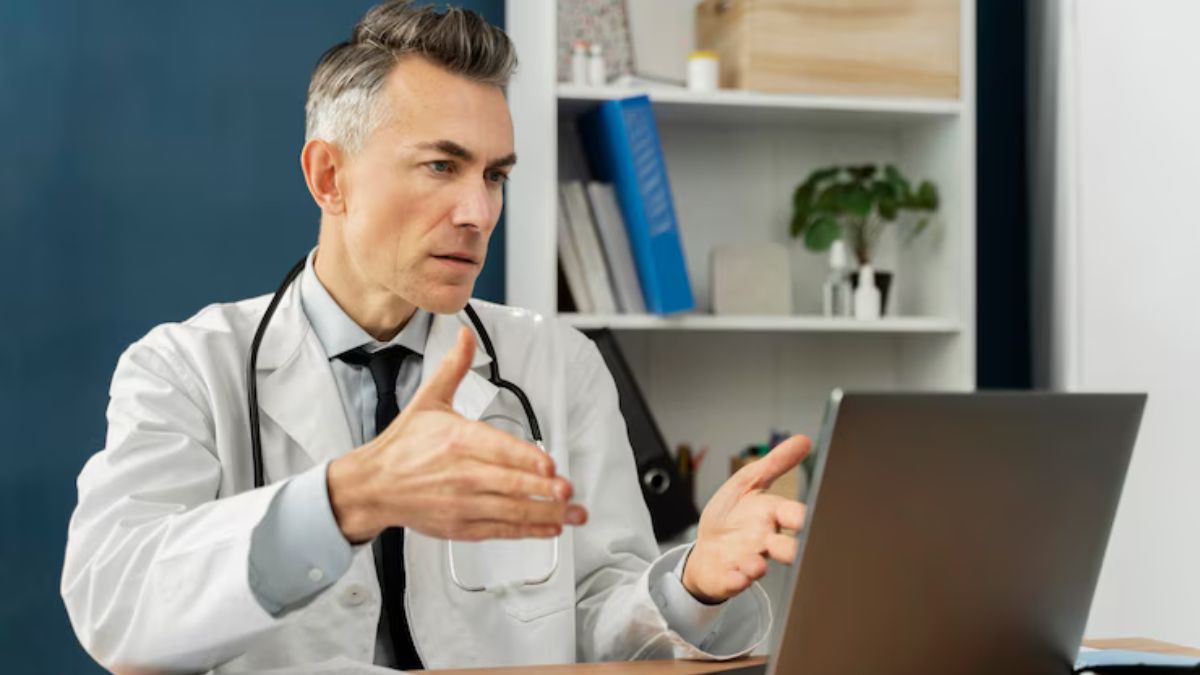HEALTH
Mastering the Path to Medical Licensure: Your Complete Guide

When preparing to practice medicine in the United States, it is essential to follow a thorough process to secure your medical license. For detailed information and resources on licensing, you can visit Medical Licensing, which offers valuable guidance and support for navigating this complex journey. Securing a medical license is a pivotal step in establishing a career in the healthcare industry. This guide will walk you through the detailed process, ensuring you understand each step thoroughly. Whether you are a medical graduate or a foreign-trained physician, obtaining a medical license requires meticulous preparation and adherence to regulatory requirements. This article aims to provide an exhaustive overview, focusing on the critical aspects of obtaining a medical license.
Understanding the Importance of a Medical License
A medical license is a mandatory credential for practicing medicine legally. It serves as a testament to a physician’s qualifications, competence, and adherence to ethical standards. The licensing process ensures that only qualified professionals can provide medical care, safeguarding public health and maintaining high standards in the medical profession.
Educational Prerequisites for a Medical License
Medical School Education
To begin with, aspiring physicians must complete a medical school education. This involves earning a Doctor of Medicine (MD) or Doctor of Osteopathic Medicine (DO) degree from an accredited medical school. The curriculum typically includes two years of classroom-based instruction in basic medical sciences, followed by two years of clinical rotations in various medical specialties.
Clinical Rotations
Clinical rotations are integral to medical education, providing hands-on experience in different areas of medicine such as internal medicine, surgery, pediatrics, psychiatry, and obstetrics/gynecology. These rotations help students apply theoretical knowledge in real-world settings, under the supervision of experienced physicians.
Passing the United States Medical Licensing Examination (USMLE)
The United States Medical Licensing Examination (USMLE) is a three-step examination for medical licensure in the United States. It assesses a physician’s ability to apply knowledge, concepts, and principles essential for patient care.
Step 1: Basic Medical Sciences
USMLE Step 1 evaluates a candidate’s understanding of basic medical sciences, including anatomy, biochemistry, pharmacology, physiology, and pathology. It is a computer-based test consisting of multiple-choice questions.
Step 2: Clinical Knowledge and Clinical Skills
USMLE Step 2 is divided into two parts: Clinical Knowledge (CK) and Clinical Skills (CS). Step 2 CK assesses medical knowledge and understanding of clinical science necessary for patient care, while Step 2 CS evaluates the ability to gather information from patients, perform physical examinations, and communicate findings to patients and colleagues.
Step 3: Clinical Management
USMLE Step 3 focuses on clinical management and assesses whether a physician can apply medical knowledge and understanding of biomedical and clinical science essential for the unsupervised practice of medicine. It includes multiple-choice questions and computer-based case simulations.
Completing a Medical Residency Program
After passing the USMLE, the next step is to complete a medical residency program. Residency provides in-depth training in a chosen specialty and typically lasts between three to seven years, depending on the specialty. During this period, residents gain extensive hands-on experience under the guidance of senior physicians, preparing them for independent practice.
Obtaining State Medical Licensure
Each state in the U.S. has its own medical licensing board with specific requirements. Physicians must apply for a medical license in the state where they intend to practice. Common requirements include:
- Completion of a residency program in the chosen specialty.
- Passing scores on all steps of the USMLE.
- Verification of credentials and submission of official transcripts and documents.
- Background checks and professional references.
- Continuing Medical Education (CME) requirements to maintain licensure.
International Medical Graduates (IMGs)
For International Medical Graduates (IMGs), additional steps are required to obtain a medical license in the U.S. These include:
Educational Commission for Foreign Medical Graduates (ECFMG) Certification
IMGs must obtain ECFMG certification, which involves:
- Verification of medical education credentials.
- Passing the USMLE Step 1 and Step 2 CK.
- Passing the Step 2 CS (or an equivalent assessment).
Residency and Fellowship Training
IMGs often need to complete residency training in the U.S., even if they have completed postgraduate training abroad. Some may also pursue fellowship training to gain additional expertise in a subspecialty.
Maintaining and Renewing a Medical License
Maintaining a medical license requires adherence to Continuing Medical Education (CME) requirements. Physicians must engage in ongoing education to stay current with medical advancements and improve their skills. State medical boards typically require a certain number of CME credits over a specified period.
Renewal Process
The license renewal process varies by state but generally includes:
- Submission of CME credits.
- Renewal application and fee payment.
- Verification of practice and professional conduct.
Special Considerations and Additional Certifications
Board Certification
While not mandatory for medical licensure, board certification in a medical specialty demonstrates a higher level of expertise. Board certification involves passing rigorous exams administered by specialty boards, such as the American Board of Medical Specialties (ABMS).
Licensure for Telemedicine
With the rise of telemedicine, physicians must be aware of the regulatory requirements for providing care across state lines. Some states offer special telemedicine licenses, while others participate in the Interstate Medical Licensure Compact (IMLC), facilitating multi-state practice.
Conclusion
Obtaining a medical license is a multifaceted process that demands dedication, perseverance, and meticulous attention to detail. By following the outlined steps—completing medical education, passing the USMLE, completing residency, and adhering to state-specific requirements—aspiring physicians can successfully obtain their medical license and embark on a rewarding career in medicine.
HEALTH
Ozone Therapy: A Modern Medical Approach

Ozone therapy is an innovative medical treatment that utilizes ozone, a highly reactive form of oxygen, to promote healing and improve overall health. The potential advantages of this therapy in treating a range of ailments, including autoimmune illnesses, chronic infections, and even cancer, have drawn attention in recent years. Ozone therapy stimulates the immune system, enhances oxygen delivery to tissues, and reduces inflammation by introducing medical-grade ozone into the body. While still considered unconventional in some medical circles, ozone therapy is becoming a popular alternative and complementary treatment, recognized for accelerating the body’s natural healing processes and improving cellular function. As research on ozone therapy continues to grow, its role in modern medicine is expanding, offering new possibilities for patients seeking holistic and noninvasive therapeutic options.
Ozone therapy stands at the intersection of science and alternative medicine, capturing attention for its purported health benefits. The treatment utilizes ozone gas, an energized form of oxygen composed of three oxygen atoms, distinct from the diatomic oxygen we typically breathe. Understanding its foundation is essential as it nods to increasing oxygenation within the body to enhance its natural healing abilities. Techniques, such as 10 pass ozone therapy, exemplify the application of this concept by exposing blood to ozone before reintroducing it back into the bloodstream, a method believed to amplify oxygen levels and promote health.
The growing interest surrounding ozone therapy is driven by its potential benefits, particularly in improving circulation and aiding immune function. As more individuals turn towards holistic health solutions, treatments like ozone therapy are gaining traction, even as skeptics urge for more empirical research to validate its efficacy and integrate it into mainstream health practices.
How Ozone Therapy Works
The mechanism of ozone therapy focuses on introducing ozone gas into the body, with the prospect of enhancing its oxygen content. This increase in oxygen is hypothesized to boost the body’s capacity to eliminate toxins and maintain optimal physiological processes. The administration methods—autohemotherapy, direct injection, and insufflation—are tailored to meet individual treatment needs, and each offers unique pathways to reap these health benefits potentially. Despite promising initial studies on the health benefits of ozone therapy, comprehensive clinical investigations are crucial for distinguishing anecdotal evidence from substantiated health outcomes, allowing the treatment to be evaluated appropriately within healthcare settings.
In particular, autohemotherapy, where blood is temporarily removed, ozonated, and re-infused, is noted for likely increasing systemic oxygen levels, which may enhance detoxification and immune system efficacy. Other methods, like direct injection, target acute areas, such as inflamed joints or tissues, where localized circulation is needed for healing. Insufflation, conversely, represents a noninvasive approach, utilizing body cavities to disseminate ozone more widely throughout the body—a technique preferred for its simplicity and diverse applications in systemic conditions.
Potential Health Benefits
Ozone therapy is gaining popularity because it may be able to treat several illnesses, including cancer, autoimmune diseases, and other chronic infections. The advocacy for ozone therapy is anchored by its alleged ability to stimulate the body’s detoxification processes by neutralizing free radicals and augmenting anti-inflammatory responses. Consequently, it could augment natural healing pathways by supporting circulatory functions that lead to overall wellness and resilience against infirmity. While the potential advantages are considerable, it remains imperative that these claims are thoroughly scrutinized through rigorous scientific inquiry to confirm their validity and utility in medical treatment plans.
Detoxification is a crucial benefit often associated with ozone therapy. The therapy’s potential to oxidize and subsequently neutralize impurities is believed to bolster the immune system and enhance the body’s metabolic processes, potentially supporting robust healing mechanisms. Furthermore, the increase in circulation that accompanies higher oxygen levels may assist in minimizing inflammation, thereby facilitating faster recovery and regeneration of healthy cells.
For instance, an individual suffering from recurring infections may find that ozone therapy acts as a catalyst in reducing symptom severity by empowering natural defenses. Although anecdotal reports are abundant, validating these effects with scientific rigor remains an ongoing pursuit. Researchers and practitioners are optimistic—yet cautious—as the therapeutic benefits of ozone warrant more extensive investigation to ensure both efficacy and safety in a clinical setting.
Common Methods of Administration
Autohemotherapy: A widely endorsed method, autohemotherapy involves drawing blood, enriching it with ozone, and reinfusing it back into the body. This process aims to deliver systemic health benefits by optimizing the body’s oxygen metabolism and boosting immune system efficiency, making it a popular choice among practitioners for its holistic approach.
Direct Injection: For localized application, ozonated oxygen can be directly injected into muscular or joint tissues. This technique is recognized for its immediacy in addressing inflammation or pain, supplying accelerated healing action where the body requires it most.
Insufflation: Ozone can be introduced into the body through noninvasive means, such as direct application to body cavities. This method is adaptable for patients seeking a systemic therapeutic experience and is known for its ease of administration and broad applicability in treating internal ailments.
Safety and Side Effects
While ozone therapy is generally acknowledged as safe when administered correctly, those considering it should understand the potential side effects, including headaches, dizziness, and general fatigue following treatment. Professional oversight is critical in minimizing risks and ensuring the administration aligns with established medical protocols. Evaluating the benefits against potential drawbacks can help practitioners tailor treatments that best meet individual patient needs.
Consulting with Healthcare Professionals
Consulting with a healthcare professional is an indispensable initial step for those contemplating ozone therapy. Such consultations noninvasively overview personal health considerations and potential interactions with ongoing treatments. Professionals can offer insights into whether ozone therapy complements current health regimens or if alternative approaches are more suitable.
A well-informed dialogue ensures that patients embark on this treatment with clarity and confidence, armed with an understanding of this evolving therapy’s potential advantages and limitations.
HEALTH
Dental Savings Plans: A Smart Solution for Seniors and Retirees

Dental Savings Plans: A Smart Solution for Seniors and Retirees
As we age, maintaining good oral health becomes more important than ever. However, for many seniors and retirees, access to affordable dental care can be a challenge. Traditional Medicare often doesn’t cover routine dental services, leaving older adults to shoulder the high costs of dental procedures on their own. This is where dental savings plans come in. For seniors and retirees seeking affordable dental care without the high premiums of traditional insurance, dental savings plans offer a practical, cost-effective solution.
Why Seniors and Retirees Need Affordable Dental Care
The Importance of Oral Health in Later Life
Oral health is closely linked to overall well-being, particularly for older adults. Common dental issues, such as gum disease, tooth loss, and dry mouth, can lead to significant health problems if left untreated. For instance, poor oral health is associated with increased risks of heart disease, diabetes, and respiratory infections. Maintaining a healthy smile is not just about aesthetics—it’s a critical aspect of staying healthy in later years.
Limited Coverage from Traditional Medicare
Unfortunately, many seniors are surprised to learn that traditional Medicare doesn’t cover most dental procedures. Routine cleanings, fillings, crowns, dentures, and even emergency treatments are typically not included in standard Medicare plans. Without dental insurance or other coverage options, retirees are often left to pay out of pocket for these necessary services, which can quickly add up to thousands of dollars.
High Costs of Dental Procedures for Seniors
Dental care can be expensive, especially for seniors who may need more extensive treatments. For example, a dental crown can cost between $800 and $1,500 per tooth, while a set of dentures may run upwards of $4,000. For those on a fixed income, these costs can be prohibitive, leading many to delay or avoid necessary dental care. This is where dental savings plans provide a valuable alternative.
What Are Dental Savings Plans?
How They Differ from Traditional Insurance
Dental savings plans, also known as dental discount plans, are membership-based programs that provide discounted rates on dental services. Unlike traditional insurance, which involves premiums, deductibles, and complicated claims processes, dental savings plans are straightforward. Members pay an annual or monthly fee and receive immediate discounts—often 10% to 60%—on a variety of dental services from participating providers.
There’s no need to worry about insurance claim approvals or coverage limits. You simply show your membership card at participating dentists and receive the discounted rate.
Flexibility and Immediate Benefits for Seniors
One of the biggest advantages of dental savings plans for seniors is their flexibility and ease of use. There are no annual maximums, meaning you can use the plan as much as you need throughout the year. Additionally, unlike dental insurance, which often has waiting periods for major procedures, dental savings plans provide immediate benefits. This is particularly helpful for retirees who may need urgent dental care and don’t want to wait months for insurance coverage to kick in. At Neighborhood Dental in Harrisburg, SD, these plans can offer a practical solution for maintaining oral health without the restrictions of traditional insurance.
Key Benefits of Dental Savings Plans for Seniors
No Waiting Periods or Annual Limits
With dental savings plans, seniors can begin saving on dental care as soon as they enroll—there are no waiting periods. This is a significant benefit compared to traditional insurance plans, which often have waiting periods of six months to a year for major treatments like crowns or root canals. Furthermore, dental savings plans do not impose annual limits on how much you can save. Whether you need one procedure or several, the discounts apply year-round.
Discounts on a Wide Range of Procedures
Dental savings plans cover a broad range of dental services, from routine cleanings and exams to more complex procedures like dentures, bridges, and even dental implants. This makes them an excellent option for seniors who may require a variety of dental treatments over time. Participating dentists typically offer discounts on preventive care, restorative treatments, and even cosmetic procedures, allowing seniors to maintain their oral health without breaking the bank.
Simple Enrollment and Low Monthly Costs
Another benefit of dental savings plans is the simplicity of enrollment. Unlike insurance plans that may require detailed health information or have restrictive eligibility requirements, dental savings plans are open to everyone. Most plans offer affordable monthly or annual fees, making them an accessible option for retirees on a fixed income. The typical cost of a dental savings plan ranges from $100 to $200 per year, significantly lower than the premiums for dental insurance.
How to Choose the Right Dental Savings Plan for You
Factors to Consider When Selecting a Plan
When choosing a dental savings plan, it’s important to consider several factors to ensure it meets your needs. Start by reviewing the list of participating dentists in your area. If you have a preferred dentist, check whether they accept the plan you’re considering. You’ll also want to compare the types of procedures covered and the percentage of discounts offered. Some plans may provide higher discounts on preventive care, while others may focus on major restorative procedures.
Additionally, consider the plan’s cost and payment structure. Some plans offer monthly payments, while others require an annual fee upfront. Make sure the plan you select aligns with your budget and dental care needs.
Comparing Plans to Meet Your Needs
There are many dental savings plans available, and it’s important to compare options to find the one that best fits your situation. Some popular providers include Careington, Aetna, and Cigna. Each plan has its own network of dentists, discount percentages, and coverage for specific procedures, so take the time to research and compare plans. Many dental savings plans also offer customer reviews, which can provide insight into the experiences of other members.
How to Enroll in a Dental Savings Plan
Simple Steps to Get Started
Enrolling in a dental savings plan is a simple process that can be completed online or over the phone. Most plans require basic personal information, including your name, address, and payment details. Once you’ve chosen your plan and completed the enrollment process, you’ll receive a membership card that you can present at participating dental offices to start saving immediately.
What to Expect After Enrollment
After enrolling in a dental savings plan, you’ll have access to discounted dental services at any participating provider. Most plans will provide you with a list of local dentists who accept the plan, making it easy to find a provider near you. If you need dental care soon after enrolling, you can start using your discounts right away—there’s no waiting period.
By staying proactive and keeping up with routine dental visits, seniors and retirees can save significantly on dental care while ensuring they maintain their oral health.
Conclusion: A Practical, Affordable Solution for Seniors
Dental savings plans are a smart, cost-effective option for seniors and retirees who need access to affordable dental care. With no waiting periods, no annual limits, and substantial discounts on a wide range of procedures, these plans provide a valuable alternative to traditional dental insurance. By enrolling in a dental savings plan, older adults can maintain their oral health without the financial burden of high out-of-pocket costs.
Key Takeaways:
- Affordable Alternative to Insurance: Dental savings plans offer immediate discounts and lower costs without the restrictions of traditional insurance.
- Flexible and Accessible: No waiting periods, annual limits, or complicated paperwork make dental savings plans an attractive choice for seniors.
- Simple Enrollment: Seniors can easily enroll in a plan that fits their needs and start saving on dental care right away.
For seniors looking to preserve their smiles and protect their health, dental savings plans are a practical, affordable solution.
HEALTH
Choosing the Right Online Health Management MBA Program

Accreditation Matters
Choosing the right health management MBA online program begins with ensuring it’s accredited. Accreditation is a hallmark of quality, confirming that the program adheres to rigorous academic standards. Accredited degrees are often more respected by employers, providing better job opportunities and boosting your career trajectory. Furthermore, accreditation can determine your eligibility for federal financial aid, making it financially viable to complete your studies. According to the Council for Higher Education Accreditation, accreditation supports student mobility by allowing theChoby cthoby.org Games: A Comprehensive Guide transfer of credits between accredited institutions, which can be crucial if you need to change schools.
Faculty Experience and Expertise
When evaluating an online Health Management MBA program, the faculty’s credentials and real-world experience are key to consider. Engaging with professors with extensive industry experience can provide practical insights that theoretical knowledge alone cannot offer. Reputable institutions like Youngstown State University typically list faculty qualifications and industry involvement on their program pages, helping you assess their capability to deliver a comprehensive, high-quality education. Faculty members who are actively involved in healthcare management can bring the latest industry trends and innovations into the classroom, providing you with an education that is both relevant and actionable.
Program Flexibility
One of the main benefits of an online MBA program is its flexibility. This is especially important for working professionals or those with family commitments. Look for programs that offer asynchronous classes, which allow you to access coursework and lectures at your convenience. Features such as multiple start dates, accelerated tracks, and customizable pacing are essential for balancing work, family, and study. Flexibility in scheduling can make it feasible to attain higher education without compromising your other responsibilities. Additionally, some programs offer the option to pause and resume your studies, providing further flexibility to manage life’s unexpected events.
Curriculum and Specializations
Examining the curriculum and available specializations is crucial to ensure they align with your career aspirations. A well-rounded curriculum should blend core business principles with specialized healthcare management courses. Elective options, capstone projects, and case studies create well-rounded professionals capable of addressing real-world challenges. Ensure the program offers courses that add immediate value to your career and long-term professional goals. For example, health economics, healthcare policy, and patient ethics courses can be particularly beneficial for those looking to take on leadership roles in healthcare settings.
Career Services and Alumni Network
Robust career services and a strong alumni network can be game-changers for your career trajectory post-graduation. Comprehensive career services usually include resume writing workshops, job placement assistance, and networking events. These services help you secure a job and prepare you for long-term career growth. An active alumni network can open doors to new opportunities and provide mentorship from experienced professionals. According to Forbes, engaging with alumni networks can be a critical factor in career advancement, as they often connect graduates to lucrative job opportunities and industry insights. Leveraging these connections can significantly enrich your professional life and quicken your ascent up the career ladder.
Student Support and Resources
Effective student support services can significantly enhance your educational experience, especially in an online learning environment. These services are crucial for ensuring student success, from academic advising to mental health resources and technical support. Academic advisors can help you navigate your educational journey, offering course selection and career path guidance. Mental health resources ensure you have access to necessary care to manage stress and maintain well-being. Comprehensive technical support is essential for resolving issues with accessing course materials or using online learning platforms, allowing you to focus more on your studies. High-quality programs prioritize a holistic support system to help you thrive.
Financial Aid and Cost
Understanding the financial implications of your education is essential. Investigate the total program cost, including potential hidden fees, and explore financial aid options such as scholarships, grants, and loans. Government websites and reputable financial institutions often provide valuable guidance on funding your education and understanding your financial commitment. As higher education costs continue to climb, securing financial aid can ease the burden and make your educational goals more attainable. Planning your finances well in advance and leveraging various funding sources can make your educational journey smoother and more manageable.
-

 HEALTH5 months ago
HEALTH5 months agoIntegrating Semaglutide into Your Weight Loss Plan: A Practical Guide
-

 HOME IMPROVEMENT5 months ago
HOME IMPROVEMENT5 months agoHow to Choose the Perfect Neutral Area Rug for Every Room
-

 ENTERTAINMENT1 month ago
ENTERTAINMENT1 month agoInside a Coomer Party: A Closer Look at this Growing Trend
-

 CONSTRUCTION4 months ago
CONSTRUCTION4 months agoConstruction Site Safety Regulations in New York and Your Rights as a Worker
-

 LAW4 months ago
LAW4 months agoTeenage Drivers and Car Accidents in California: Risks and Parental Liability
-

 LAW4 months ago
LAW4 months agoGang Activity and Criminal Charges in CA: Protecting Your Rights
-

 FASHION5 months ago
FASHION5 months ago7 Celebrity-Inspired Elegant Summer Dresses For 2024
-

 LAW4 months ago
LAW4 months agoKentucky’s School Football: Concussions, Injuries, and Legal Options
